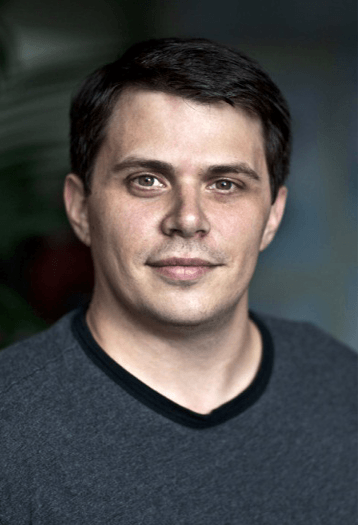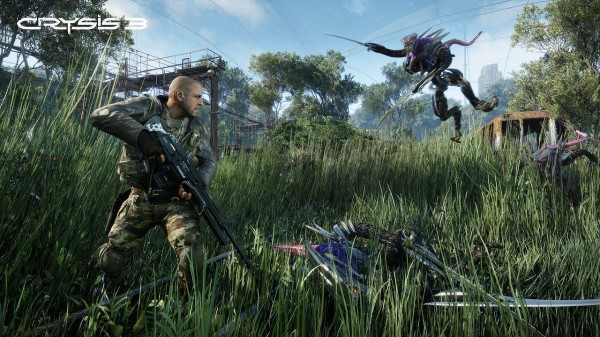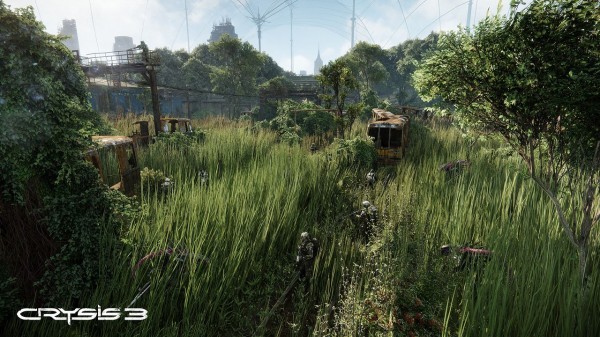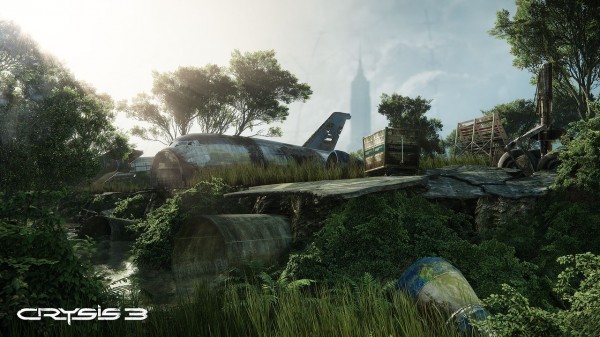 At the EA Showcase here in Sydney, I had the opportunity to interview Mike Read, the producer of Crytek and EA’s Crysis 3 (hands-on impressions of it’s Hunter Mode can be found here). He, along with Fuse Creative Director, Brian Allgeier, and SimCity Producer, Jason Haber (whom I also interviewed), made the long trip to Australia for this event.
At the EA Showcase here in Sydney, I had the opportunity to interview Mike Read, the producer of Crytek and EA’s Crysis 3 (hands-on impressions of it’s Hunter Mode can be found here). He, along with Fuse Creative Director, Brian Allgeier, and SimCity Producer, Jason Haber (whom I also interviewed), made the long trip to Australia for this event.
Before the interview, here’s a quick background on Mike Read and his working history:
“A native of Vancouver, Canada, Michael arrived at Crytek after five successful years with CCP Games, where he applied his diverse talents as a Live Streaming Producer, Game Master, Creative Services Production Manager and Conventions Director on titles including EVE Online, DUST 514, and World of Darkness. An avid fan of Team-Based Multiplayer FPS and Action RTS sports games, Michael worked in the music industry for five years before making the switch to videogames and has previously lived in New York City, Reykjavik and Atlanta en route to Frankfurt.”
Without further ado, enjoy the interview!
Am I correct in saying that you came onto the project mid-development? I remember reading that you came on in April of this year.
I did, yeah. I came on in April. So, it took some time to get my visa and contractual stuff organised for my move to Germany, I was living in the U.S. at the time. So it took some time before I was able to fully get over there. But I kinda got started a little before that, probably two months before that, starting to review all the information and troll through piles of documents that they had, and I was thinking “God, my head hurts!”. And I wanted to get over there, so I got over there with about a month before we had to begin to prepare for E3. So I had a month to basically pick up on everything that was going on with the game that had been talked about since. It was kind of a nerve-racking experience, but it taught me a lot about what was going on and helped me to learn very quickly.
Well, that was going to be my next question; how was that experience?, but we got a good idea of it right there! (Laughter)
Yeah, it was challenging…probably one of the most challenging things I’ve done. I like coming onto a project…I mean, I had played the Crysis games and had really liked them. I can’t say that I was a fanatic, but I really liked them, and coming in and meeting the team, and going through that interview process, I was like “wow, I really want to work here”. So, it was like being thrown into the fire; I had all eyes on me in the company because I was doing a lot of external stuff before I came in, but it came together well. The guys I work with on the team are awesome, I mean they are vets in the industry at this point as far as I’m concerned. Some of them have been working there since Far Cry and beyond.

Awesome. Would you be able to tell us how the CryEngine 3 has been altered or improved for it’s use in Crysis 3?
I can’t go too in-depth with that because the R & D and Tech guys will get very upset with my if I say something wrong. (Laughter) But, there’s been an enormous amount of work done on the engine itself. I mean, the amount that the technology has advanced even over the last two years, and the amount that consoles have changed in getting older over those years, has really been a lot. And also, in the two years since the launch of Crysis 2, the CryEngine itself has become a true powerhouse in the industry in terms of how much it’s been licensed. I mean, if you look at the games that have been licensed from CryEngine 1 to CryEngine 2 and up to CryEngine 3, there was a lot of positive things that came out of that and what we had to do ourselves to make Crysis work on consoles. And moving forward, we have over 50 licensees now in all facets of different things from film to architecture to games, so we’re able to build a support mechanism to do that. So we’ve learned a lot from that standpoint, and how to do those deals and what we’re learning from all those partners, but also internally as well. There’s a lot of stuff that’s not in the free SDK yet, that we have internally which we have to figure out how to use these tools to provide them publicly, such as the grass technology. Everybody’s like “oh, I gotta get my hands on that!”.
And that usually takes the most processing power…
It’s surprisingly low. It’s actually one of the lower things on that scale, and a lot of people have asked me a number of times “is this being done on consoles?”, and it’s like, “well fields wouldn’t be fields without grass, right?!” And in the way it looks, it may have to be toned down a little bit for budgets and things like that for consoles. But you saw the video with our tessellated toad tech and all that stuff; a lot of the stuff that’s in there…I mean, there’s a lot of little things that we couldn’t fit in that video, especially tools on the development side that just make it so much easier for our designers to work and have a better workflow. What we refer to it as is “what you see is what you game”, so you can get into the editor and you can build these worlds, build everything on there and then can jump right into it and immediately start playing your new level right through the editor, which is genius. And one of the biggest things is in terms of lighting; we can do real-time lighting on the fly in there and our lighting guy is INSANE! I love sitting there and watching this guy, and watch him work. And a lot of the tools on the lighting end are mainly due to him. Lighting just adds so much…getting that right, which is something that has not really been pushed hard in the industry until lately, along with particle effects, is huge.

If I may mention this, that was the thing that caught everyone’s eye on Battlefield 3 and in the Frostbite 2 engine back when it was released. If you light it all properly, it makes everything else look better. And with Crysis 3, I can say it is probably the first game I’ve seen that truly looks next-gen, especially on PC. It’s breaking that barrier.
Well we definitely are and we didn’t…I mean, consoles are sitting at the 8 year mark where’s it’s so behind the curve at this point. And we are able to squeeze some more out of them. I mean, there is a game that came out recently, that I’m not going to mention, that looks really good. I mean, I’m surprised at how good it looks on consoles.
I think I just reviewed the game in question actually. I’m sure I know which one you’re talking about. (Laughter)
(Laughter) So, it’s definitely interesting to be able to say “wow, this is running on hardware that’s 8 years old at this point!”, and to see what they’re able to pull out of that. I mean there’s a whole new set of challenges in dealing with consoles, but we learned a lot from Crysis 2. That was really…a lot of people doubted Crytek’s ability to be able to move into consoles and be able to effectively do all we can with the CryEngine, and we did that. There were certain things that some people were able to point out as flaws, or things that were lacking in Crysis 2, but we had such a barrier with the engine and breaking that down. And the technical barriers that we had were causing design barriers as well, so we weren’t able to push it as far as we wanted to. So with Crysis 3, we know how to develop for consoles now; we’ve analysed that situation and said “ok, so here’s what we need to do” and then eventually take the PC build to the side and say “ok, how hard can we push this?” We had a guy earlier in the year that interviewed Cevat [Crytek’s CEO] at GamesCom, where he said that it will make your PC melt. And then the Alpha came out, and all of the tech sites started doing these assessments to see if that was the case, and they were like “yep, that’s really the case”. (Laughter) It does push PCs hard, but even when you drop it down to medium settings, it still looks really good. But, when you add those extra things in and when you’re running it on the highest possible settings, it adds that much more for those who want to utilise it and have that hardware, or want to upgrade their PCs. The technology is there and beyond.
Well, I think I can run it. I always go Ultra and I upgraded not long ago so I should be good. (Laughter). Now, in regards to the story, of course we can’t speak on specific story details, but do you feel that the 20 year gap is a necessary storytelling device?
It is quite a gap, and it’s definitely a challenge to fill in that gap as to what’s happened during that time, so it wasn’t a throwaway decision. There is a couple of things that we’re working on that will help fill in some of those beats, not that I can talk about those yet, but they won’t be in the game itself. There’s certain things that will be referenced back to in Crysis 3 specifically that will reveal more of that. It is challenging, but it also opens some doors and some different avenues that we can take. So it’s definitely a blessing and a curse in some ways, but I think we’ve done a pretty good job of making it work.

Well I look forward to playing it out and learning more hands-on. Ok, so our last question here will have to be on the 7 Wonders – what was the inspiration in implementing those different environments under the dome? Was it purely a choice in creating a visually diverse game because the previous games were kind of thematically restricted in terms of environmental design?
Well we came back to New York again, mainly for storyline reasons and we wanted to have distinguishable elements of New York but we also wanted to go back and bring in some of the vegetation and jungle environments we had in Crysis 1. So a lot of the early stuff I saw was like “hey, here’s a shot of New York City” and then guys would use photoshop and paint over it, going “yeah, this is it”; taking different areas and defining what they were. And that was defined at a pretty early time in the process and was iterated over time. Our Art Director can go into full explanations and not just visual explanations; he’ll sit you down with a picture and he will explain “yeah, it’s hot, it’s humid, it’s gross, it’s disgusting…think about the Vietnam war and how the soldiers felt” and that kind of thing. He’ll go into really descriptive details about how he feels about the image he’s created.
It’s like a real place.
Yeah, it totally is. He’s really taking that and breaking it down. It’s probably one of the hardest things we’ve done during development – creating these 7 distinct areas. Because if you look at Crysis 2 and Crysis 1, it was very…in terms of the design, it was really the same throughout the whole thing, but just placed a little bit differently. And New York is already pre-defined, but we’ve had to kind of re-imagine it and then take these different environments you’ll find like rainforests and jungles and some of these areas, and break them down to create these 7 distinct areas all the while tying them in with these man-made structures.
It’s an interesting idea just to vary up the atmosphere, mood and environment. And also the game will naturally feel new in each area.
Yeah it does, and the game will feel different and play slightly different through each of the different areas you play-through. If you take the environmental shots and put them all up side-by-side, people would ask “are they seven different games?!” So it was definitely a big challenge.
Awesome, well thank you very much for the interview. The release date is middle of February, is there a global release?
It’s slightly broken up. North American is first in February 19th, and I believe it’s February 21st for Europe and here in Australia as well.
Great, thanks again for the interview Mike!
No, thank you!

